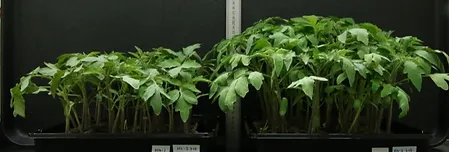Never miss an update from Larisa Sheloukhova
Create your free account to connect with Larisa Sheloukhova and thousands of other innovative organizations and professionals worldwide
Background
Agroecosystems face multiple challenges worldwide. Agricultural lands are deteriorating, crops are exposed to extreme weather conditions, and new strains of pests resistant to chemical pesticides are emerging. In order to build sustainable agroecosystems, minimize devastating diseases, and maximize crop yield, understanding what drives ecosystem dynamics is of paramount importance so that the drivers can then be manipulated.
Technical Summary
The inventors developed a technology based on large-scale DNA analysis that identifies symbiotic networks between plants and microorganisms in the underground soil. The composition and function of microbiomes is assessed and changes in microbiota due to environmental factors can be estimated.By identifying ‘core microbiomes’, sets of microorganisms that form cores of interactions, the researchers then use them to optimize microbial functions at the individual plant and ecosystem levels (Fig. 1,Toju et al. 2018). This means that we can utilize natural resilience via enhancing the microbial communication network underground.

Figure 1.a) Identification of core microorganisms. Within a microbial network, hub microbial species or strains are defined based on network topology data. Microorganisms are scored based on their potential to recruit native microorganisms with diverse physiological and ecosystem functions (b) and potential for blocking pathogen/pest infection (c). Such roles of core microorganisms can be further reinforced by introducing pairs or sets of core microorganisms in facilitative interactions (d). From Toju et al. (2018) Nature Plants 4:247-257.
Different types of ecosystems can be analyzed including farmlands, forests, grasslands, freshwater and seawater ecosystems. The core specieswith beneficial biological functions such as the ability to decompose organic matter, transport soil nutrients, suppress pest/pathogens, and stimulate plants’ immune systems are then chosen to 1) restore natural ecosystems 2) design sustainable ecosystems composed of more resilient species 3) produce enhanced plant seedlings to improve crop characteristics.
The technology was already tested in several plant species (green onions, tomatoes, komatsuna, strawberry; these were chosen for quick PoC) improving the growth and resilience of the crops by enhancing the plant-symbiont relationships (Fig.2). We observed more yield with fewer fertilizer/pesticides. This technology is inherently applicable to grains/trees.

Figure 2. Tomato without symbiotic fungi (left) and tomato with fungi (right).
Sunlit Seedlingsis a spin–off from Kyoto University that develops sustainable agriculture technologies. We are looking for business partners.
Technology Readiness Level:7
Potential Applications:
Sustainable farming
Ecosystem development and restoration
Biodiversity analysis
Information services: analysis of microbiome composition within a host
Advantages:
Sustainable agriculture incl. improved crop yield
Ecosystem restoration following natural disasters
Information-based agricultural cultivation
Possible Collaboration Mode(s):
R&D collaboration
Licensing
Other
Patents No:
WO2022-102389 (USA);特開2022-133839; 特開2022-106643; 特開2022-077963 特開2021- 149918; 特許7038451; 特許6899107; 特許6899107; 特許6899106
Kyoto University was founded in 1897, the second university to be established in Japan. Kyoto University is among 10 National Designated Universities in Japan. It boasts 18 graduate schools, 10 faculties, 12 research institutes, and 26 centers and other establishments. Research conducted at Kyoto University spans the full spectrum of fields from social to natural science.
The outstanding research conducted at Kyoto University gives birth to useful technologies that could greatly benefit society. IAC (Office of Institutional Advancement and Communications) was established at Kyoto University to bridge the gap between researchers and industry. We facilitate joint research, technology transfer, creation of university startups, and provide entrepreneurial education. We are building a strong network of global industry partners to make sure basic research reaches the market.
Create your free account to connect with Larisa Sheloukhova and thousands of other innovative organizations and professionals worldwide
Send a request for information
to Larisa
Technology Offers on Innoget are directly posted
and managed by its members as well as evaluation of requests for information. Innoget is the trusted open innovation and science network aimed at directly connect industry needs with professionals online.
Need help requesting additional information or have questions regarding this Technology Offer?
Contact Innoget support